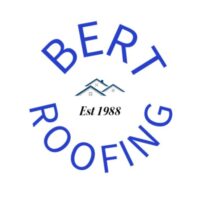The Most Common Roofing Mistake: Drip Edge
What is Drip Edge?
A metal drip edge is an essential component in roofing, particularly for shingle roofs. It is a metal flashing installed at the edges of the roof to direct water away from the fascia and into the gutters, thereby protecting the underlying roofing components from water damage. Here are some key points about metal drip edges:
Purpose and Benefits
- Water Management: It helps direct water off the roof, preventing water from seeping under the shingles and causing damage.
- Protects Fascia: By keeping water away from the fascia, it helps prevent rot and deterioration.
- Prevents Capillary Action: It stops water from being drawn back up under the shingles through capillary action.
- Wind Protection: Helps secure the shingles at the edges, reducing the risk of wind damage
Dallas, and most local municipalities, follow the International Residential Code (IRC). Does the IRC require a drip edege?
Yes, the International Residential Code (IRC) does require a drip edge on a roof. The specific requirement is found in the 2018 and later editions of the IRC. The relevant section is R905.2.8.5, which outlines the need for a drip edge at the eaves and rakes of asphalt shingle roofs.
IRC 2018 Section R905.2.8.5 – Drip Edge
- Location: Drip edges are required at both the eaves and rakes of shingle roofs.
- Installation:
- At eaves, the drip edge should be installed under the underlayment.
- At rakes, the drip edge should be installed over the underlayment.
- The drip edge should be lapped a minimum of 2 inches.
- The underlayment should extend over the drip edge at the eaves.
- Overlap: Sections of the drip edge should overlap by at least 2 inches to ensure continuous protection.
Do Shingle Manufacturers require a drip edge?
Many major shingle manufacturers require the installation of a drip edge as part of their warranty requirements and to ensure proper roof performance. Here are a few notable manufacturers that specify the use of a drip edge in their installation guidelines:
1. GAF
GAF, one of the largest roofing manufacturers, requires a drip edge for both eaves and rakes in their installation instructions. They emphasize that a drip edge is crucial for protecting the roof deck from water infiltration and wind-driven rain.
2. CertainTeed
CertainTeed specifies the use of a drip edge in their shingle installation guidelines. They recommend installing it at both the eaves and rakes to help manage water flow and protect the roof’s structural components.
3. Owens Corning
Owens Corning’s installation instructions call for a drip edge to be installed at the eaves and rakes. They highlight its importance in preventing water damage to the roof deck and extending the life of the roof.
4. IKO
IKO includes the requirement for a drip edge in their roofing installation guidelines. They advocate for its use at both the eaves and rakes to enhance the roof’s water-shedding capabilities and protect against moisture damage.
It is very important to follow manufacturer instructions so that the warranty requirements are followed
Are there size requirements for drip edge?
The International Residential Code (IRC) specifies the size and installation details for drip edges in Section R905.2.8.5. According to the IRC, the required size for a drip edge is a minimum of 0.019 inches (0.48 mm) in thickness and must extend at least 2 inches (51 mm) back from the roof edge and bend downward to cover the fascia or the edge of the roof decking. Here are the key points:
IRC 2018 Section R905.2.8.5 – Drip Edge Size Requirements
- Thickness:
- The drip edge must be a minimum of 0.019 inches (0.48 mm) thick.
- Dimensions:
- The horizontal flange (the part that extends back from the edge of the roof) should be at least 2 inches (51 mm).
- The vertical leg (the part that bends downward) should cover the fascia or the edge of the roof decking adequately.
So Where Do Most Contractors Go Wrong?
Size! The most widely used drip edge in roof replacement is 1.5 inches by 1.5 inches. Drip edge must be at least two inches up the roof. The most commonly used drip edge does not meet code or manufacturers instructions. Many roofing supply shops continue to stock this item despite the lack of code compliance. They sell a great deal of it.
Your roof will not fall apart with the wrong drip edge, but you really expose yourself. What if you go to sell your home two years from now and a buyer demands a $1,600.00 repair to meet code? How about a shingle manufacturer not honoring a warranty for an improperly installed roof?
What drip edge does Bert Roofing use?
Any drip edge that meets the IRC. The most common we use is two inch by two inch. This metal comes pre-painted which looks best. A compliant alternative is one inch by two inch metal. This is only available in galvanized form..
